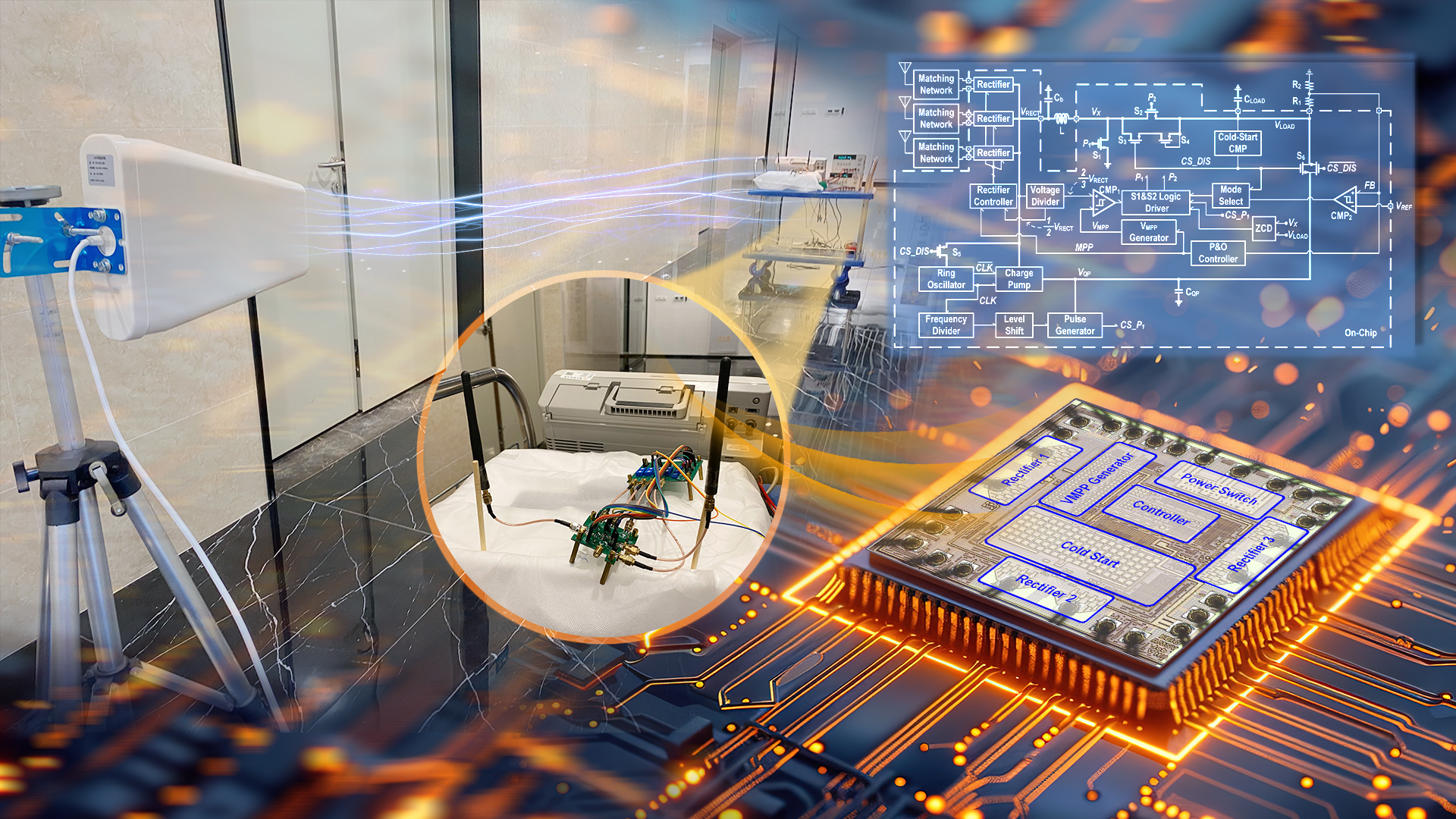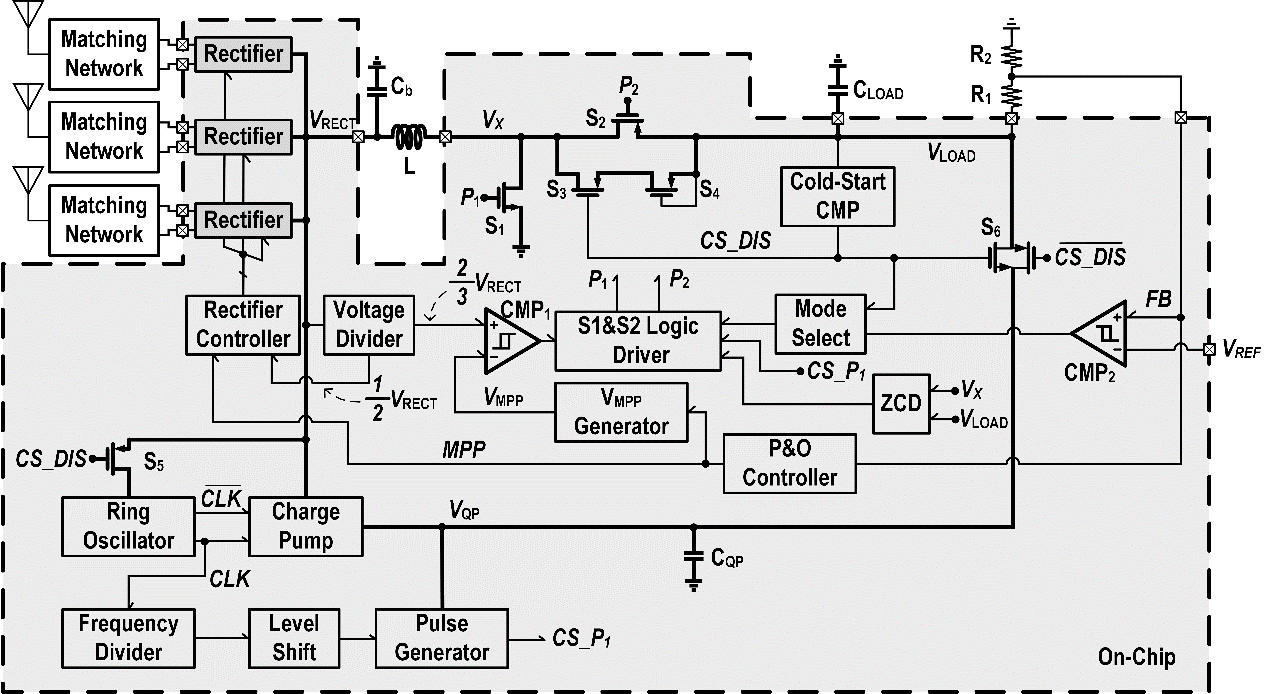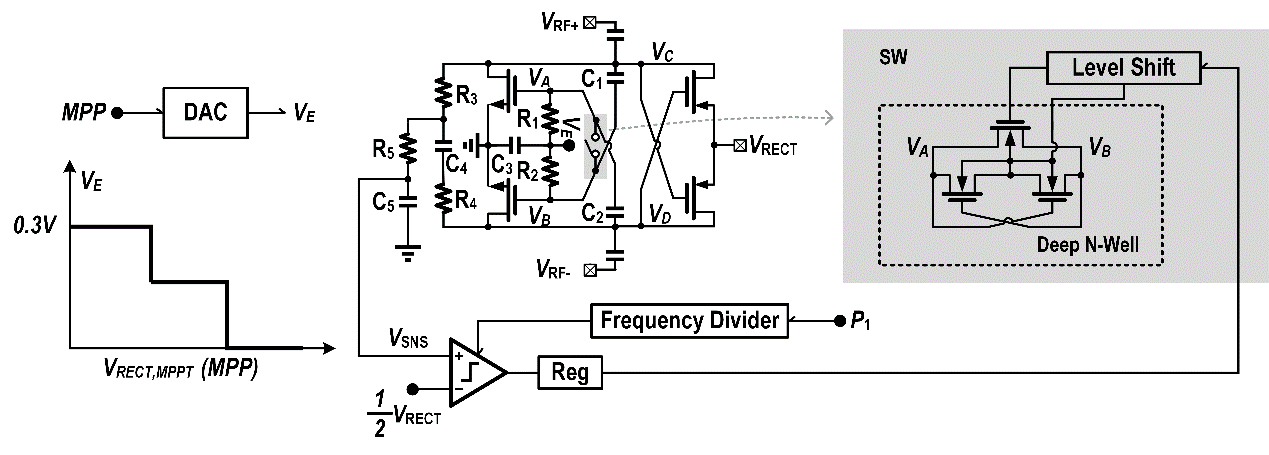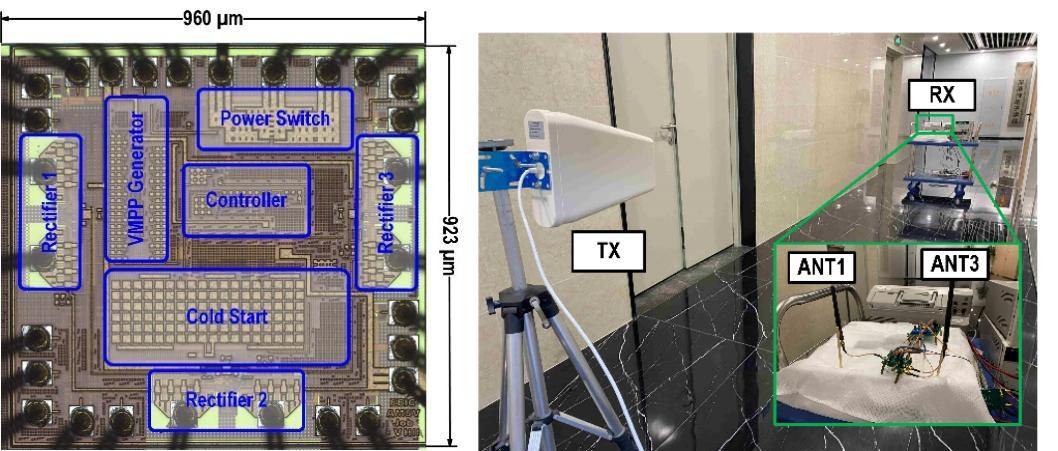With the aid of RF energy harvesting technology, ultra-low-power wireless sensor network devices and Internet of Things (IoT) devices can obtain energy from RF signals. This reduces the need for batteries, thereby lowering material and maintenance costs.
Traditional RF energy harvesting systems typically use only a single antenna for energy harvesting. Due to the multipath effect of electromagnetic waves during propagation, some blind spots (areas with very low electromagnetic field intensity) are distributed in space. This ultimately limits the angle and intensity at which the RF energy harvesting device can receive energy.
Overcoming these limitations is crucial for advancing the efficiency and reliability of RF energy harvesting systems, which can significantly enhance the sustainability and functionality of IoT and sensor network applications.

Associate Professor Chenchang Zhan’s research group from the School of Microelectronics at the Southern University of Science and Technology (SUSTech), in collaboration with Professor Man-Kay Law from the Institute of Microelectronics at the University of Macau (UM), has recently achieved significant progress in the field of radio frequency (RF) energy harvesting system. Their research proposes a novel low-cost, high-efficiency multi-antenna RF energy harvesting solution, effectively addressing the challenge of blind spots and improving system reliability.
Their work, entitled “A High-Efficiency Low-Cost Multi-Antenna Energy Harvesting System with Leakage Suppression”, has been published in the IEEE Journal of Solid-State Circuits (JSSC), a top-tier journal in the field of integrated circuit design.
The block diagram of the multi-antenna RF energy harvesting system proposed by the researchers is depicted in Figure 1. The system features three RF antennas distributed at different locations, thereby reducing the impact of blind spots on the entire system. Multiple RF channels share one storage capacitor, reducing system cost since there is no need for additional isolation switches between channels. This also reduces chip complexity and allows for the expansion of more antennas. The second stage of the circuit employs a switched-inductor boost converter to achieve Maximum Power Point Tracking (MPPT) and output voltage regulation. Additionally, the system includes a cold start function.

Figure 1. The system of multi-antenna harvesting system with leakage suppression
To address the mutual interference and inter-channel leakage issues arising from sharing a single storage capacitor among different RF channels, the researchers propose a novel RF rectifier and its control circuit, as shown in Figure 2. By controlling both the DC and AC components of the gate voltage of the RF rectifier, the conversion efficiency is improved when the rectifier is conducting. At the same time, it can be completely shut off during leakage, reducing losses. Consequently, the system achieves a peak conversion efficiency of 44% and a high conversion efficiency power input range of 15dB (input power range corresponding to a conversion efficiency >35%). In wireless tests, compared to using a single antenna, the output power with dual and triple antennas shows varying degrees of improvement. The setup is illustrated by the chip photo and system test photo (Figure 3).

Figure 2. The rectifier with the leakage suppression

Figure 3. Photo of chip and energy harvesting system
These advancements in multi-antenna RF energy harvesting significantly enhance energy capture efficiency, reduce system costs, and improve reliability. This work paves the way for more sustainable and effective deployment of IoT devices and wireless sensor networks, addressing key challenges in the field.
Zhaobo Zhang, a joint Ph.D. student at SUSTech and UM, is the first author of this paper. Professors Chenchang Zhan and Man-Kay Law are the co-corresponding authors, with SUSTech as the primary institution affiliated with this research.
This work was supported by the National Natural Science Foundation of China (NSFC), Shenzhen Science and Technology Innovation Commission (SZSTI), and the Macao Science and Technology Development Fund. Additionally, the researchers have applied for an invention patent, with the ownership shared equally between SUSTech and UM.
Paper link: https://doi.org/10.1109/JSSC.2024.3387025
To read all stories about SUSTech science, subscribe to the monthly SUSTech Newsletter.
Proofread ByAdrian Cremin, Yingying XIA
Photo BySchool of Microelectronics